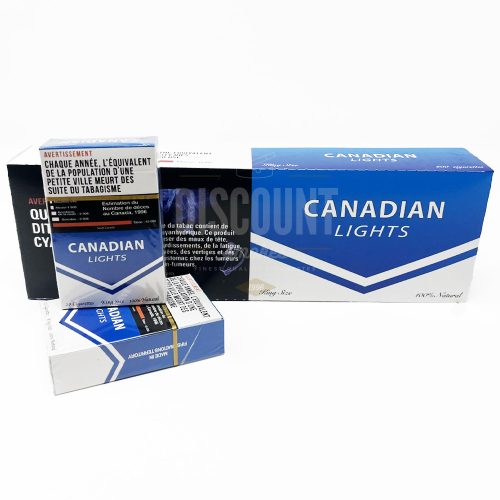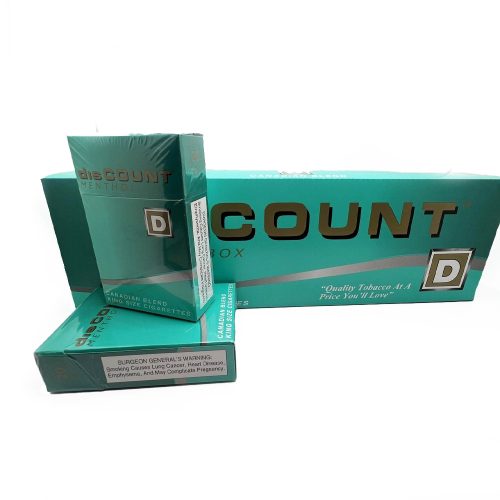Guides
How Many Cigarettes in a Pack: Understanding Standard Packaging and Variations
Cigarettes are produced in different sizes and shapes, depending on a number of factors, such as the country of production, the brand, and the legislation that regulates the manufacture and sale of tobacco products. Discount Smokes provides a large selection of legal smoking products that are customized to your preferences because we recognize that smokers value both quantity and quality.
Knowledge of the differences between these is crucial for consumers, retailers, and other stakeholders in the tobacco industry. This guide provides an overview of the various standard and not-so-standard pack sizes in various markets.
Standard Pack Sizes Worldwide
United States
A standard pack of cigarettes in the United States of America contains 20 units. This size is uniform across different brands and meets the required stipulations set by relevant authorities.
European Union
In many European countries, the standard pack size is 20 cigarettes. Some countries may vary this, selling packs of 19 or 21, depending on local preferences and promotions.
Asia
For example, in Japan and China, packs are usually sold in sets of 20 cigarettes. There are exceptions, with some packs containing 10 or 25.
Uncommon Pack Sizes

10-Cigarette Packs
You may sometimes find 10 cigarette packs available in some outlets. These smaller pack sizes are ideal for those who don’t smoke frequently or can be used for promotional campaigns.
25-Cigarette Packs
In some countries, like Australia, a pack can hold as many as 25 cigarettes. These larger packs are more suitable for the regular smoker as they lower the cost per cigarette.
Mini Packs and Multipacks
Compact Packs
Mini packs contain 10 cigarettes and are ideal for individuals requiring a compact package.
Bulk Purchases
Multipacks are common in wholesale and duty-free environments, bundling multiple standard packs together. This approach often presents a cost-effective solution for bulk buyers.
Factors Influencing Pack Sizes
1. Consumer Preferences
Customers can choose different pack sizes depending on their needs and smoking frequency. Understanding these trends is, therefore, crucial to meeting market demands.
2. Government Guidelines
This is because legislation plays a significant role in determining pack sizes to control usage and improve public health measures when it comes to product accessibility.
3. Financial Aspects
The cost of production and the pricing strategies also influence the number of cigarettes contained in a pack. Bigger packs are usually for those who want to get as much as possible for their money, while smaller packs are for those who only smoke occasionally.
Different Types of Cigarette Packs
1. Flexible Cigarette Packs
Flexible packs are preferred because their soft material allows for easy transportation. These packs usually contain 20 cigarettes, but they are not as durable as hard ones.
2. Rigid Cigarette Packs
Cigarette packs in rigid packaging provide additional protection against damage and ensure the quality of the cigarettes. They also have 20 cigarettes, which are preferred because they are more durable and last longer during use.
Evolution and History of Cigarette Pack Sizes
The sizes of cigarette packs have evolved in various ways over the years due to consumer preferences, advancements in manufacturing, and legal requirements. The early packs contained fewer cigarettes because there was a limited market for cigarettes and restrictions on production. With the increase in smoking in the mid-1900s, it became common for a pack to contain 20 cigarettes, which was handy for consumers and beneficial for manufacturers.
Factors Influencing Pack Size Variations
There are a number of reasons why cigarette packs differ in size:
- Regulatory Policies: To reduce tobacco use, some governments impose restrictions on the size of packs.
- Economic Factors: Pricing policies frequently determine whether larger or smaller packs are more practical.
- Customer Preferences: Demands vary among markets. For instance, larger packs may be more cost-effective in Canada.

Emerging Developments in Cigarette Packaging
1. Eco-Friendly Options
Tobacco companies seek eco-conscious packaging options as the population becomes more conscious of the environment. These new strategies seek to minimize waste and minimize the industry’s negative impact on the environment.
2. Personalized Packs
Future changes may let you pick a pack size that best suits your needs. This customization ensures that you get the best services and address the needs of as many customers as possible.
Legal and Regulatory Aspects

Regulations Surrounding Cigarette Package Sizes
Various countries have come up with certain measures on the size of cigarette packs in a bid to reduce the cases of smoking.
Variations in International Regulations
For instance, Australia has set legal requirements for standard packaging and improved health warnings, which alter the shape and size of cigarette packs.
Effects of Regulations on Producers and Buyers
Such regulations often result in higher production costs for manufacturers and reduce the ability of consumers to choose their preferred pack sizes.
Key Insights
To this end, the stakeholders must remain informed of the ever-changing environment. This awareness enables them to set their policies in a manner that is informed by the current market and/or regulatory environment.
This can help explain the connection between pack sizes and the quantity of available cigarettes. It provides a useful overview for consumers, industry stakeholders, and potential market entrants in the tobacco sector.
These insights enable you to analyze market trends, consumer behavior, and the effects of regulation. Therefore, it is crucial to keep up with the changes in the tobacco business to remain relevant.
FAQs
Q1. Why Do Countries Have Various Standard Sizes for Cigarette Packs?
Various countries have set their own rules regarding the legal dimension of the standard cigarette pack. These rules are sometimes set due to the government’s efforts to regulate the use of tobacco products, improve the population’s health, and meet international commitments.
Q2. Can You Customize Cigarette Pack Sizes?
Most tobacco companies sell different pack sizes tailored for certain markets or marketing campaigns. This flexibility allows companies to offer different products depending on consumers’ preferences or as part of promotional strategies.
Q3. Is It True That Smaller Cigarette Packs Are More Expensive per Cigarette?
In fact, smaller packages of cigarettes are often more expensive per stick than larger ones. This can be attributed to the high costs of packaging and marketing these small quantities.
Q4. Are There Rules Governing Cigarette Pack Sizes?
Many countries have laws that set the minimum and maximum number of cigarettes sold in each pack. These guidelines are meant to promote conformity in packaging and regulate the flow of tobacco products in the market.
Q5. What Effects Do Non-Standard Pack Sizes Have on Public Health?
Non-standard pack sizes may cause changes in smoking patterns and intake, which may result in different consequences for public health. These shifts can affect the perception and consumption of tobacco products.





























